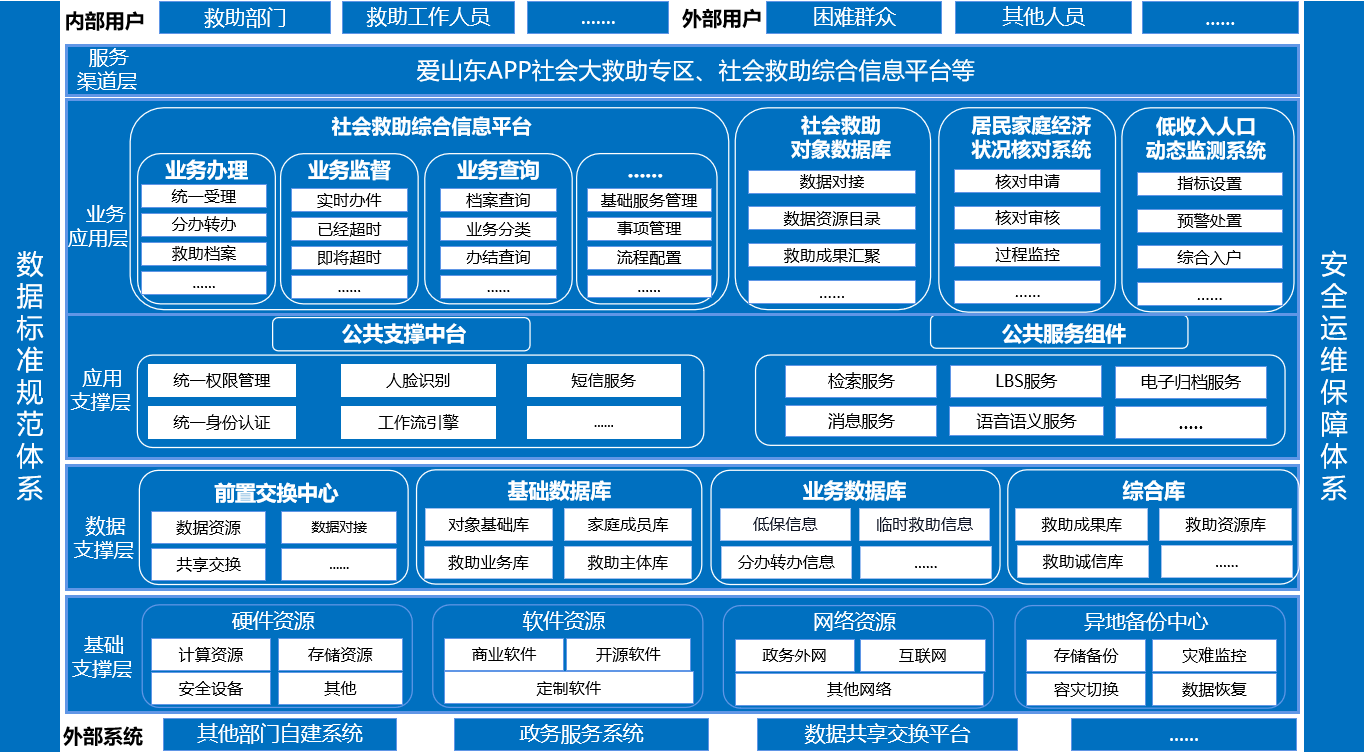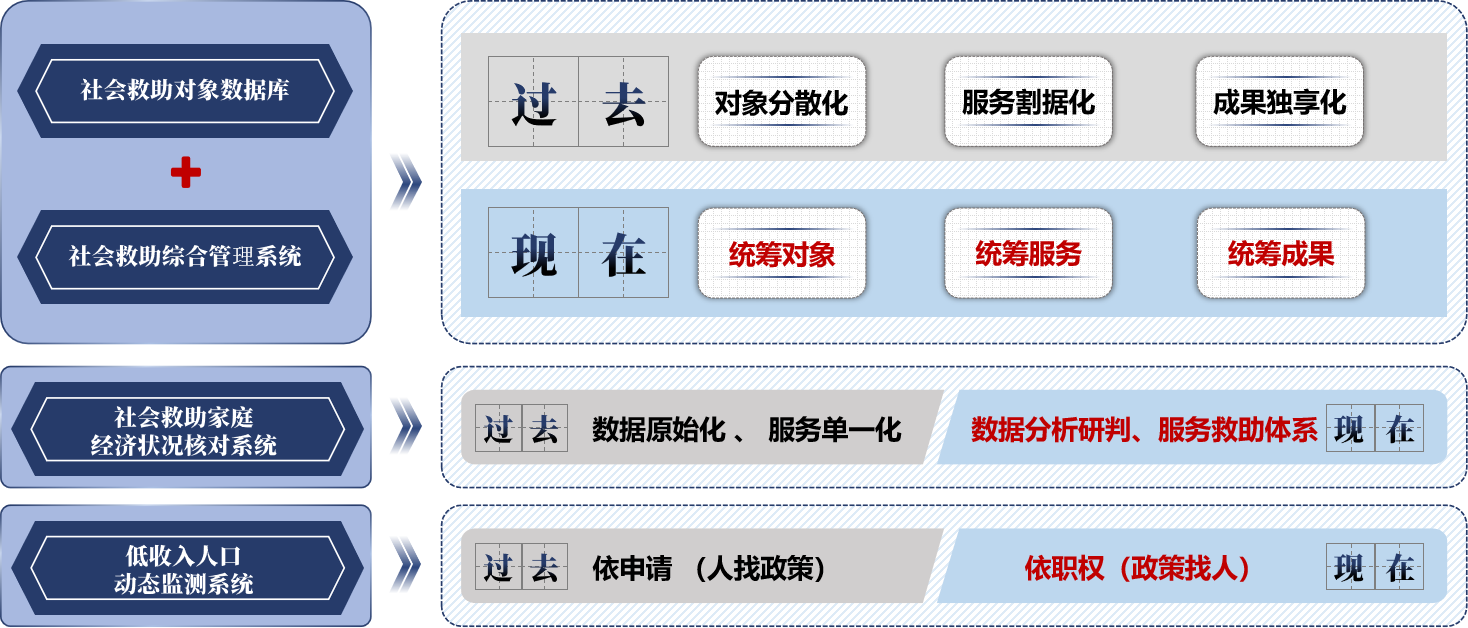
Customer: Shandong Civil Affairs Department
Industry: Civil Affairs
Products/Solutions: Social Assistance Comprehensive Management Information Platform of Shandong Civil Affairs Department
Keywords: Assistance, Verification, Low-income Population

In response to the requirements of the "Shandong Provincial People's Government Guidelines on Coordinating and Improving the Social Assistance System" (LU ZHENG ZI [2019] No. 221), which include requirements of "building a comprehensive management information platform for social assistance" and "improving the verification platform for the economic status of households receiving social assistance", the Department of Civil Affairs of Shandong Province has been vigorously promoting the overall planning of the social assistance system. It aims to eliminate the phenomena of dispersed assistance recipients, singular services, exclusive benefits, and closed supervision, and establish a social assistance service model featuring "four ones"—one certificate application, one-off processing, one-stop online platform, and one shared database. To this end, the department commissioned Beiming Software to build a comprehensive management information platform for social assistance.

In combination with the relevant policies of the Ministry of Civil Affairs and the needs of Shandong Province's civil affairs, Beiming Software utilizes data integration and application based on the construction of a data application platform. It conforms to the principle of "overall planning, phased construction, and simultaneous construction and application", aiming to build a comprehensive management information platform for social assistance of the Department of Civil Affairs of Shandong Province. The platform achieves digitalization of basic civil affairs data, networked business processing, intelligent decision-making analysis, standardized service protocols, convenient handling of matters and transparent query and supervision. It has established a new management mechanism that relies on data for communication, decision-making, management, and innovation, providing powerful data services and technical support for all kinds of planning, management, decision-making, and services related to civil affairs informatization.

1. Achieving the effective allocation and sharing of information resources.
The platform established a comprehensive social assistance management system with four functions: reception, departmental handling, data analysis and comparison, and knowledge base; it deeply integrates various assistance policies of different departments and units to achieve process optimization of related assistance projects, and effectively solve the problem of dispersion of assistance functions and resources.
2. Constructing a three-dimensional assistance pattern.
The platform actively connects and consolidates data across from provincial, municipal, and county levels to build an interconnected "shared database of assistance". Through the platform, social assistance workers can help elderly, sick, disabled, and immobile applicants apply for various assistance on their behalf, assist in the implementation and tracking of the handling process, and realize the "online handling" of assistance matters. It transforms social assistance work from passive management to active service, further improving the service quality and levels of social assistance.
3. Bridging the "last 100 meters" of social assistance.
The platform collects a large amount of social assistance information, so that the department can view the rescue business from a multi-dimensional perspective. It supports decision-making through in-depth excavation and wide application, providing support for the construction of a layered and categorized social assistance system and reinforcing the social assistance safety net.

1. Promoting the innovation and reform of the assistance system.
The platform transforms the previous arbitrary way where departments can determine the recipients of relief, and optimizes it into a system where policies identify those in need, so that the relief is more precise and fair.
2. Opening up all channels for groups in need to apply for assistance.
Disadvantaged groups can apply through various channels such as PCs, mobile apps, mini programs, and self-service terminals, achieving zero errands and remote operation at home, therefore realizing "universal application and home-based processing".
3. Activating identification of difficult groups.
The platform dynamically monitors difficult groups with real-time warnings, and offers immediate assistance, effectively preventing the "silent minority" from missing out on policy support because they have not applied for assistance on their own, thereby giving them warmer support.